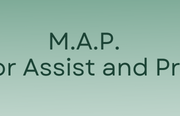Memory of the photo reporter Simone Camilli killed in Gaza 7 years ago
Questo articolo è disponibile anche in:
![]()
by Maria Laura Franciosi – His human profile, his studies, his dialogue with people of other faiths in his father’s memories
OSSIGENO 13 AGOSTO 2021 – Simone Camilli’s distinctive background enabled him to follow the direction of his studies and his desire to make other cultures more widely known.
As an audio-visual journalist, the image was fundamental for him. A graduate in the History of Religions in Rome, with a thesis dedicated to Islam, with a three-year research degree on the concept of martyrdom, Simone Camilli was clearly passionate about this field of study even before becoming a journalist following an internship at the Italian state broadcaster RAI’s editorial office in Cairo. He was then called upon to collaborate with the editorial staff of the Associated Press (AP) agency in Rome during the illness of Pope John Paul II.
It was during this collaboration that he expressed the desire to do an internship in Jerusalem where he met with the clergy of the various religions present in that city driven by the desire to learn more. He remained as an intern in Jerusalem for a while and worked with “Asia News” before being hired by Associated Press.
He had a relevant preparation having studied the history of religions, and so in Jerusalem with its numerous religions he found what he was looking for, associating with friends of various confessions both Jewish and Muslim, Palestinian and Israeli, all of whom he loved to invite around the table in his home to talk and exchange views.
He loved to report on the events and on the people, and the suffering on all sides. Camilli was certainly looking for points of contact between religions, and he loved to report and film especially children, in particular those of Gaza and their segregated life. He was the first video-reporter to arrive at a school after an attack. The images he sent were distressing but they had to depict the reality as he saw it. But he wanted to remain impartial. Camilli was not an activist for one side or the other; he was a journalist who wanted to maintain his status as an independent observer. He did not take sides but observed and recorded the behaviour of human beings immersed in a culture that fascinated him.
At a certain point, during the Armenia/Azerbaijan border conflicts Simone decided to go to Yerevan in a minibus along with other colleagues, passing through the mountains to get to know the peoples who lived there. They were experiences that he had longed to have during his studies of trying both to understand and make others understand certain realities of the world.
It was an unexploded bomb in Gaza that killed Camilli. He was there to photograph in order to illustrate why some bombs had not exploded and how to avoid them. In Gaza Simone was known by many and regarded as a non-hostile person.
Simone’s father, Pier Luigi Camilli, also a journalist, still remembers his emotional reaction in a meeting with two Palestinians in the Senate in Rome. They accompanied a bishop he knew and when he introduced himself and they heard his name, the Palestinians understood that he was Simon’s father and greeted him as if he were a family member.
Simone’s empathy for Palestinians was evident: he was clearly a journalist, trying to get to the roots of human behaviour, with a profound attention to the world’s suffering. Camilli once did a report on the routines Palestinians had to go through to work in Israel, passing through multiple checkpoints that often took a long time. To be at work at 8 in the morning it was therefore necessary to start the journey four hours earlier losing in this way half a day’s work. Simone was keen to say “I tell the facts”. He was not a militant who saw only one side of the coin, but he was totally immersed in all aspects of the story.
“I reflected on the coincidence – concluded Pier Luigi Camilli in an interview with Ossigeno – that his working life began with Pope John Paul II and continued with his dispatch to Jerusalem, a complex world in which it was certainly difficult to have so many – of different faiths and orientations – all around the same table calmly discussing and analysing events but he succeeded in helping them to reach a degree of harmony “. (MLF)





Leave a Reply
Want to join the discussion?Feel free to contribute!